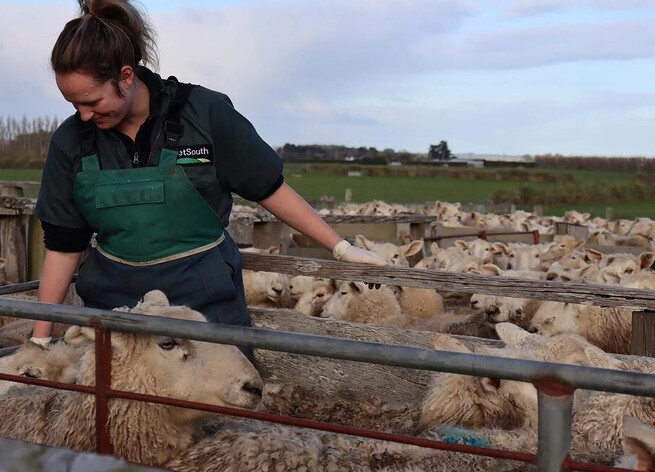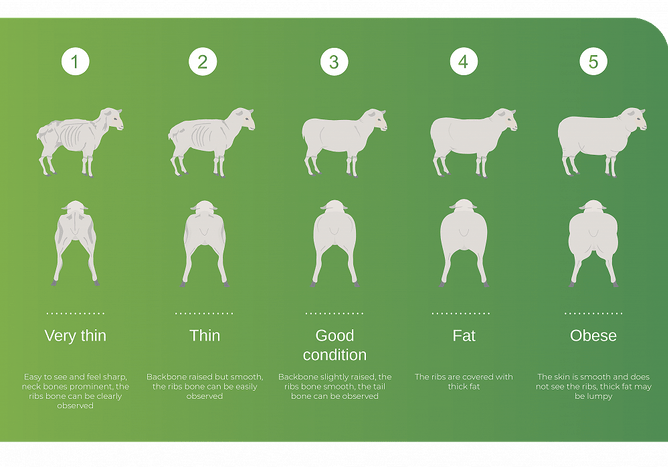More than a matter of fat.
In a perfect world, the year-round maintenance of a ewe would be a well-oiled machine, maintaining her body condition at an optimal 3, consistently rearing twins to a killable weight at weaning, and requiring minimal health intervention or disease treatment – not too much to ask really is it? However, as we all know, the metabolic demands of pregnancy, lactation, and a push for maximum production; combined with the adverse weather events of winter storms and summer droughts that affect feed access or supply, can result in ewe body condition behaving like a roller coaster. These variables, coupled with challenges from diseases such as facial eczema and parasitism mean that a robust, efficient, well performing and consistent ewe, that maintains her health and body condition during challenging times, is key to maximising profit in sheep farming enterprises.
The last few years have been particularly challenging throughout many areas of the country. Severe droughts and adverse weather events are predicted to become more common. As a result, pressure placed on many systems has forced culling out of underperformers, that have been unable to ‘hack the pressure’ - losing weight, failing to produce or rear their lambs to suitable weight, or succumbing to health issues. On these farms, this has resulted in a shift in the type of animal that can fit their environment and perform under such adversity; resulting in the selection of a more efficient and robust ewe, that is still highly productive.
Body Condition Scoring (BCS), utilising palpation of the lumbar region, has been used in the sheep industry for more than 50 years. This has many advantages over liveweight for determining the condition and well-being of an animal. While the relationship between BCS and productivity is positive, for many breeds it is likely to be curvilinear. This means the biggest gains can be made by reducing the number of low BCS animals within the flock, rather than simply maximising ewe body condition. The utilisation of regular body condition scoring of the ewe flock at key times of the year (scanning, weaning and premating), can help recognise ewes in less than optimal body condition, and guide decisions into management changes that may be required to improve an animals production (e.g. separating them and moving to better quality feed to lift body condition). Furthermore, identifying poorer conditioned animals may also be used as a selection tool, thereby identifying less efficient animals in the system.
Selection for increased ewe body condition has been shown to improve animal production through
- Increased conception rates
- Lambing percentage
- Higher lamb birth weights and survivability
- Increased weaning weights.
Fat is distributed in various sites, with variation in sites where different breeds deposit body fat (subcutaneous vs. intermuscular vs intramuscular vs intra abdominal fat).
Body condition score is correlated with both intermuscular fat in the lumbar region and the depth of the fat above the longissimus dorsi muscle, along with the depth of the longissimus dorsi muscle itself (which comprises both muscle and intramuscular fat).
A gain in liveweight comes at an energy cost. Therefore, a gain in BCS also has an energy cost. This cost varies depending on the physiological state of the animal and its current BCS. Fat is expensive to lay down but efficient to maintain, whereas muscle is relatively cheap to lay down but is harder to maintain. In lighter animals, muscle is generally the first component to be laid down when increasing body condition followed by fat. It requires more energy to gain an additional unit of BCS in animals with a heavier reference weight or a higher BCS, likely because this additional gain is predominantly due to increasing body fat (which is more energy dense than muscle). There is also evidence to suggest that it requires less energy to gain an additional unit of BCS in lactating ewes than it does in non-lactating ewes, suggesting lactating ewes are more efficient at gaining body condition provided there is adequate feed supply.
Growth in lambs requires energy, which during times of reduced pasture growth relies on energy from the lactating ewe. When feed is available adlib, BCS of a ewe has less effect on production performance than when pasture cover is limited. During times of increased metabolic demand at lambing and lactation, if pasture cover is limited, the muscle and fat from the ewe are utilised and redistributed and broken down to feed lambs. Some of these ewes will gain weight prior to weaning if increased feed supply becomes available, however in difficult cold springs, or the onset of early dry conditions where pasture is restricted, a ewe may lose weight, her milk production reduce or cease, and she may succumb to other health effects (parasitism, pneumonia etc). This (along with stunted growth of her lambs), will ultimately impact on the longevity of the ewe within the flock.
Ewe longevity has a big economic impact especially when it comes to replacement value. Younger ewes have less milking ability than an older multiparous ewe and the cost of replacing ewes that prematurely leave the flock due to low BCS, health issues, or a failure to get back in lamb can be costly, cutting into your farm profit. A common principle in studies with cattle, pigs and poultry shows that excessive selection for production traits (meat yield, growth rates and milk or egg production) can result in the sacrifice of traits that would be required for longevity (maintaining body condition of breeding females, timely fertility of breeding females, strong bones and reduced susceptibility to disease etc.), therefore a balance between productivity and longevity is more desirable.
In terms of ewe requirements, the annual cost of keeping a ewe are divided into production costs and maintenance costs. Approximately 70% of a ewes cost are required for maintenance, while the remaining 30% are required for production. Like an extensive beef cow, the efficient ewe needs to be able to put on condition when it is cheaply available and be able to maintain that condition by having a low maintenance requirement. By maximising lamb growth during the spring where growing conditions are at their most favourable, a higher percentage of lambs can be sent off to the works off the ewe. This will help to free up pasture for remaining lambs to grow out on. Ewes in optimal condition at weaning that do not require preferential feeding can be utilised to clean up pastures behind lambs and/or used to graze rougher lower quality pastures. With many farms now undertaking a ‘no drenching policy’ in their ewes, these un-drenched ewes may also be used as a tool to maintain parasite refugia, thereby helping to mitigate or delay the development of drench resistance on a farm.
Selection for efficiency is complicated and requires measurements of feed intake, net feed efficiency and food conversion ratio along with production outputs (fertility, growth rates, wool and muscle yield). In contrast, selection against inefficiencies are more straightforward, and can be achieved by pressurising the system and culling the under performers. Sometimes nature inadvertently does this pressuring for us.
Unfortunately, the selection for increased production and ewe efficiency are not always correlated. Increased growth rates will likely lead to larger mature size (unless capped) resulting in higher feeding costs required to feed larger framed ewes. Larger framed animals are later maturing and are slower to lay down muscle and fat. Utilising performance recording will help to identify outliers, (animals with a moderate frame size but are still fast growing and easy fleshing lambs and are able to be sent to the works at weaning).
There are many examples of flocks and breeds throughout the country that have proven themselves to be efficient. Any ecosystem, farming enterprise, environment and flock has a natural intrinsic balance for which production can be sustained. Optimising the level of production for which this can be achieved to maximise profit in the long term is the crux. Long term farm sustainability and environmental impact are very topical talking points at this present time. There is no one size fits all, and the recipe chosen may be dictated by the environment, the climate, their production system and the general philosophy of the farmer. For every increase in production (whether it be increases in the number of lambs born, increased growth rates, increased muscle mass) there is a cost to the system. Sometimes this is clear what this cost will be but other times this cost has not been recognised and may show up down the line. Improving efficiency within your breeding flock will help to reduce the overall costs and effectively ‘get more from less’.
- Heather Busby


